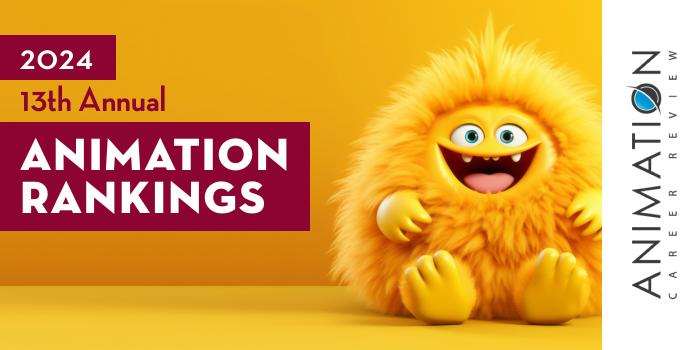The College of Visual Performing Arts (CVPA) at University of Massachusetts Dartmouth (UMass Dartmouth or UMassD) serves more than 500 students. This creative division provides access to the Graphic Design & Illustration, Digital Media, and Drawing/Painting Labs, as well as six instructional computing labs; the Hall-Hildreth IDEAStudio (a collaboration between the College of Engineering and the CVPA); two student gallery exhibition spaces; and other resources such as the Visual and Media Literacy Hub and the Innovative Learning Collaborative (ILC).
The CVPA at UMass Dartmouth also provides access to four paths to study animation: the Art and Design BFA: Animation and Game Art (AGA BFA), the Art and Design: Integrated Studio Arts BFA, and minors in Animation or Game Arts. Minors are 18 credit hours, including 15 credit hours in the core and one three credit hour elective.
Students in both options will take Principles of Animation and Story Structures, and work with digital tools such as Maya, Photoshop, and Unity3D. Common electives include Digital Video Production and Advanced Topics in Animation and Game Arts. Animation students will also take 3D Modeling and 3D Animation, with access to other electives such as Visual Design for Games, and Illustration: Character Design and Environments. Game Arts students will also take Principles of Game Design; Visual Design for Games; and Game Design. Other Game Arts electives include 3D Modeling and 3D Animation.
The Animation minor culminates with the production of a 2D and 3D animation portfolio. Game Arts students will complete a portfolio of prototypes (character, environmental design, and functional). UMassD Animation and Game Arts graduates are prepared for careers such as Animator, Game Artist, 3D Modeler, Game Designer, Rigger, Game User Interface Designer, and Texture Artist.
The Art and Design BFA at UMass Dartmouth requires 78 credit hours in the major and 120 credits overall. All first year CVPA students must complete the Foundations program before entering the BFA with a concentration. Examples of Foundations courses include Digital Essentials; Theory and Criticism in Art and Design; 2D Form and Surface; and Visual Arts Seminar.
The CVPA Animation and Game Art concentration explores 2D and 3D animation, interactive design, virtual reality, 3D modeling, storyboarding, game design, and storytelling. Course examples include 3D Digital Animation and Modeling; Principles of Animation; Game Design; 3D Modeling; Visual Design for Games; Story Structures; Senior Animation Studio; and Senior Game Studio.
In the last two years of the AGA BFA, students will have opportunities to complete an internship and study abroad experience. In the final year, students will complete the Professional Design Practice course and the A+GA Capstone and Exhibition.
UMass Dartmouth CVPA graduates enjoy a 91% employment (or graduate school) rate within six months of graduation. AGA BFA graduates are prepared to pursue positions in traditional, new, and emerging fields such as animation, special effects (SFX), scientific visualization, VR/AR, multimedia, art direction, forensic animation, UI/UX, game design, visual effects (VFX), software design, advertising, environmental design, art education, and video editing.
Program alumni have been hired at places such as Microsoft, Razorfish, Jack Morton Worldwide, Sametz Blackstone Associates, White Rhino, Mad*Pow, iFactory, Woods Hole Oceanographic Institution (WHOI), and Zak Pak.
The Art and Design: Integrated Studio Arts BFA at University of Massachusetts Dartmouth is designed for incoming transfer students looking for a broad degree across the Visual Arts. Students in this program have the unique opportunity to mix-and-match studio courses from other CVPA programs to create their own study plan. Courses may come from Animation and Game Arts; Illustration; Graphic Design; Drawing; Digital Media; Painting; Photography; and Printmaking, among others.
Integrated Studio Arts BFA students may also explore fields across UMassD. Examples include Business, Computer Science, Engineering, and Science. This 120 credit hour program begins with the Foundations program and ends with the Studio Art Capstone and Exhibition. Graduates are prepared to pursue careers across the Visual Arts.
University of Massachusetts Dartmouth began as New Bedford Textile School in 1895. Part of the UMass System, UMassD serves approximately 7,460 students enrolled in 249 undergraduate majors, minors, and fields of study; 42 master’s degrees, 17 doctorate programs, and 43 graduate certificates; and 48 total STEM programs. Programs at UMass Dartmouth are housed across seven colleges and schools.
University of Massachusetts Dartmouth is accredited by the New England Commission of Higher Education (NECHE), the National Association of Schools of Art and Design (NASAD), and the Engineering Accreditation Commission of ABET, among others.












